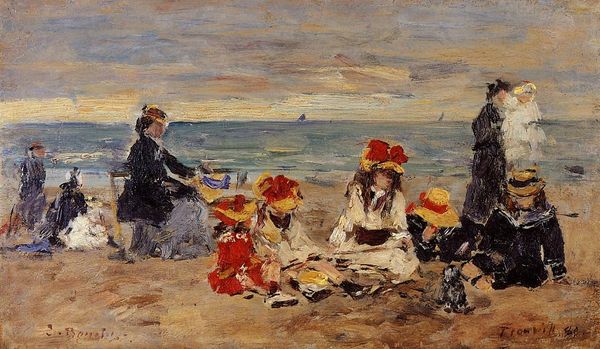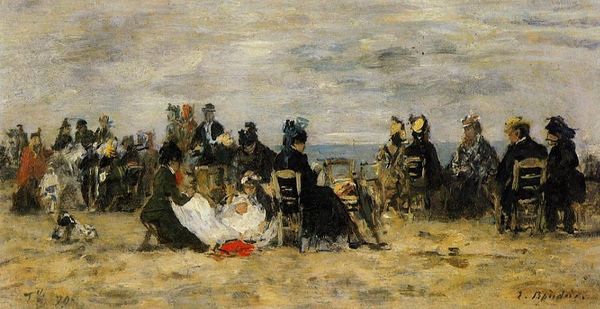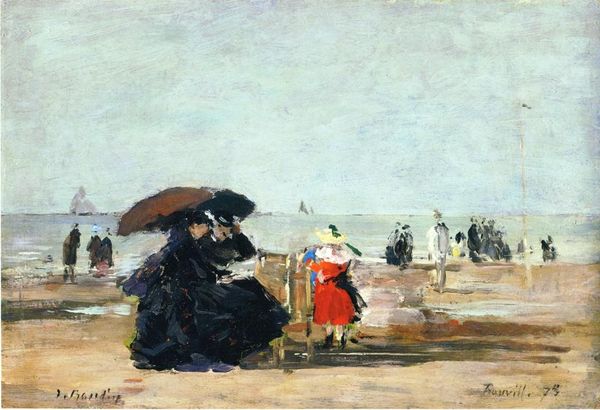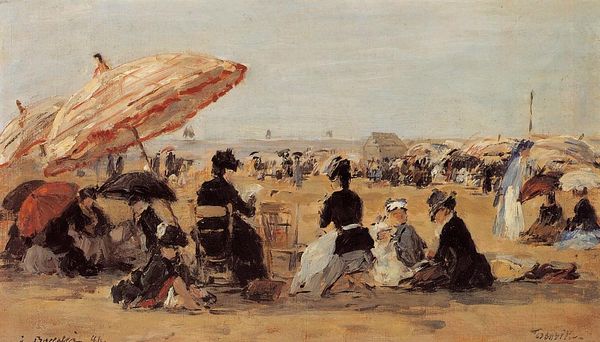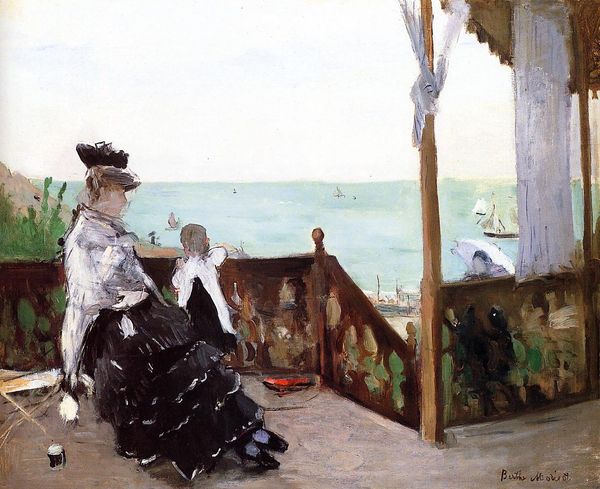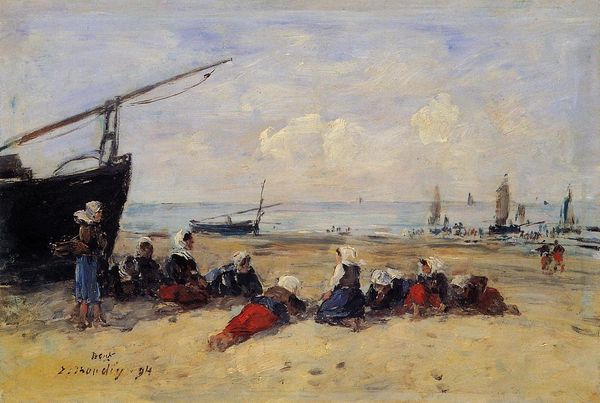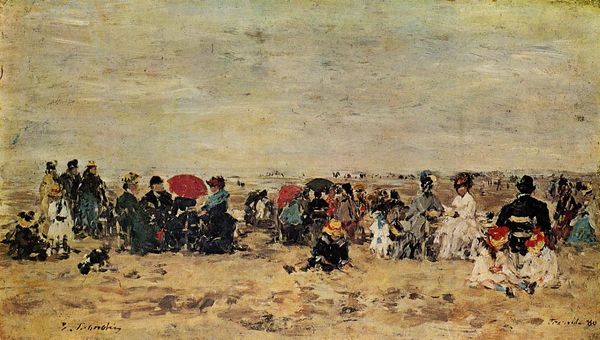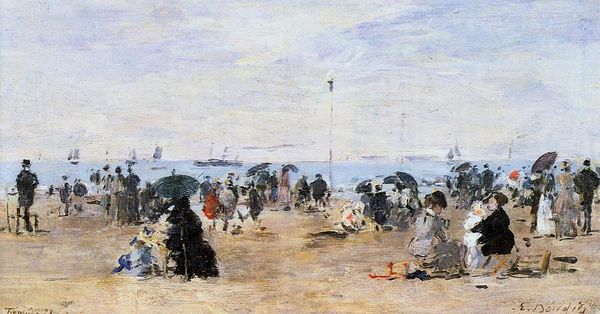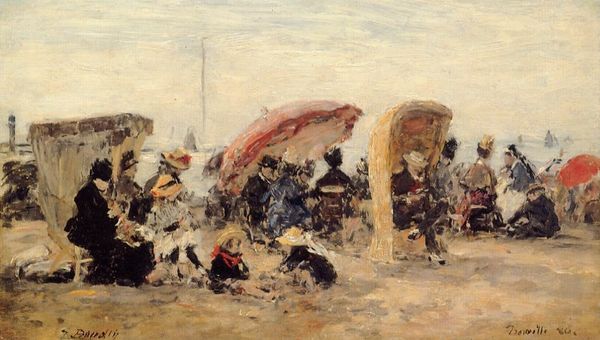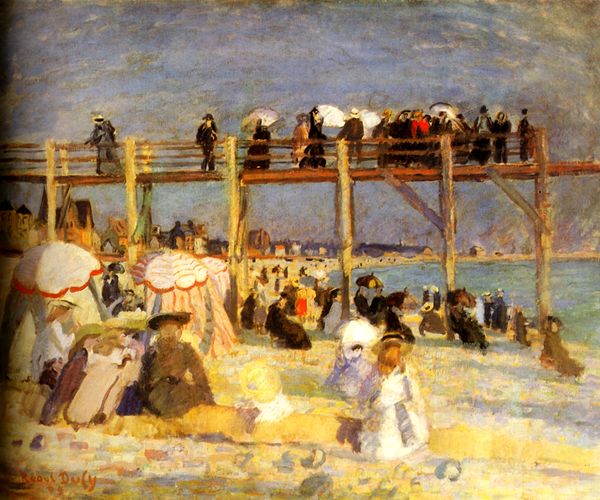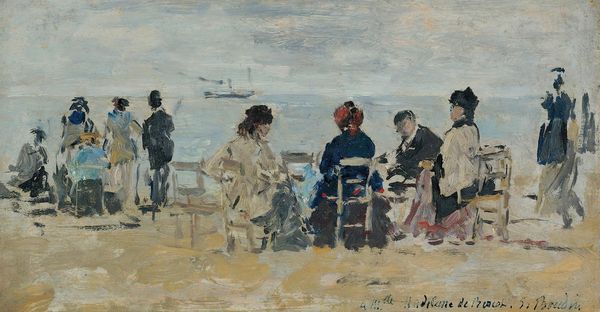
Copyright: Public domain
Eugène Boudin’s painting presents us with a beach scene where the materiality of paint evokes the atmosphere of a day by the sea. The composition is structured around contrasts. The foreground, dominated by figures clustered under and around a large parasol, is rendered with a close tonal range of dark colours. These contrast with the expansive sky and sea, suggested through diluted washes of blue and grey. Boudin’s brushwork is loose and suggestive. The figures are defined by quick, gestural strokes that capture their essence without detailed precision. The parasol itself acts as a focal point, its curved form drawing the eye and framing the group. This juxtaposition of the defined foreground against the indefinite background not only captures the scene but also engages with the broader concerns of impressionism. Boudin is interested in capturing a fleeting moment, embracing the ephemeral nature of light and atmosphere. This exploration challenges the traditional academic emphasis on clearly defined forms and stable subjects, opting instead for a dynamic representation. The painting is more than just a visual record. It's an investigation into how we perceive and interpret the world around us through the language of paint.
Comments
No comments
Be the first to comment and join the conversation on the ultimate creative platform.
